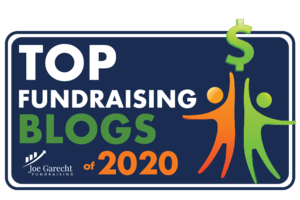Last week, I presented eight planned giving myths that were identified and debunked by fellow fundraising professionals from the Smart Planned Giving Marketers Group on LinkedIn.
 This week, I’m presenting the seven additional myths I promised along with a bonus myth.
This week, I’m presenting the seven additional myths I promised along with a bonus myth.
Continuing to embrace planned giving myths can be harmful. Doing so will make you less helpful to your donors, less able to raise money, and less able to realize your career aspirations. That’s why I felt it important to identify and debunk some common gift planning myths.
Judging from the large number of readers Part 1 attracted, I know plenty of folks around the world agree with me. While I have numbered the myths, strictly for reference purposes, I am presenting them here in alphabetical order by contributor:
Michael J. Rosen, CFRE, President, ML Innovations:
In my book, Donor-Centered Planned Gift Marketing, I go into detail when debunking five planned giving myths which I’ll summarize here:
MYTH 9 — Planned giving is very difficult.
Gift planning can certainly be challenging, However, for the most part, it involves fairly simple gifts: Bequests, CGAs, appreciated property (i.e.: stock).
MYTH 10 — One needs to be a planned giving expert to be involved in gift planning.
Nope. While it would be helpful to be a planned giving expert, it’s not necessary. The vast majority of planned gifts will come from Bequests. CGAs and appreciated property are two other simple, popular types of planned gifts. You don’t need to be an overall planned giving expert to master those planned giving vehicles. However, you should be familiar with other gift planning options and know who to call for assistance when a donor wants to talk about those other options.
MYTH 11 — All planned gifts are deferred.
No, they’re not. For example, a gift of appreciated stock is a current gift. Even with a deferred gift such as a Bequest, depending on the age of the donor, you might not need to wait all that long for the gift to be realized.
MYTH 12 — Good marketing focuses on organizational needs.
Nope. Good marketing actually involves being donor centered.
MYTH 13 — Planned gift marketing should be passive.
Many development pros think it is inappropriate to actually ask for a planned gift. However, 88.7 percent of donors say otherwise. So, why have only 22 percent of Americans over the age of 30 been asked to make a planned gift?”
Charley Shirley, CPA, Senior Consultant, Donor By Design Group LLC:
MYTH 14 — Planned Giving is a separate discipline from Major Gifts.
The two should go hand in hand. I often consider these to be two sides of the same coin and even create recognition opportunities that consider BOTH major gifts and planned gifts. Recognition is not expensive. Recognizing a donor for the combined total of their gifts enables them to jump to a whole new level of giving that they may never have thought possible. It builds goodwill and connects them even more to your organization.”
Development professionals need to remember that most donors do not think of giving as either planned giving or major gift giving. Those are methods of giving. Instead, donors tend to focus on what they philanthropically want to accomplish. Once you understand your prospect’s situation and his or her philanthropic aspirations, you’ll be well positioned to recommend a method or methods for consideration.
Greg Warner, President, MarketSmart:
MYTH 15 — Planned giving donors don’t use the Internet.
The use of email and the Internet (especially Facebook) by seniors is on the rise — very dramatically recently. See lots of stats here.”
Here’s your bonus myth:
Craig Forney, Director of Chartable Estate Planning, American Heart Association:
MYTH 16 — Donors just want me to come by, but it just eats up my schedule!
I had a donor and his wife that I would call and say I’ll be in town on such and such a date and he would invite me over to his little home and cook his Norwegian food. I actually watched a cockroach walk up the wall eating one day. Invariably, I would get up to leave, and he would say, ‘Could I do another charitable gift annuity?’ He did eight gift annuities before he passed away. I really enjoyed his company and always prayed over the meal (just in case).”
When I read Craig’s contribution to the discussion, I was reminded of the core customer-first principles outlined by the hugely successful L.L. Bean retail company. One of those principles is:
A customer is not an interruption of our work; the customer is the purpose of it.”
All you have to do is replace the word “customer” with “donor” and it nicely supports the point Craig made. If you want to read more about how the L.L. Bean principles apply to the nonprofit world, you can read my post “What Can Fundraising Professionals Learn from L.L. Bean?“
Once again, I thank Greg Warner for starting this discussion, and I thank everyone who participated and shared his or her thoughts. Now, I invite you to join the conversation either on LinkedIn or below. What are some other planned giving myths?
That’s what Michael Rosen says… What do you say?








